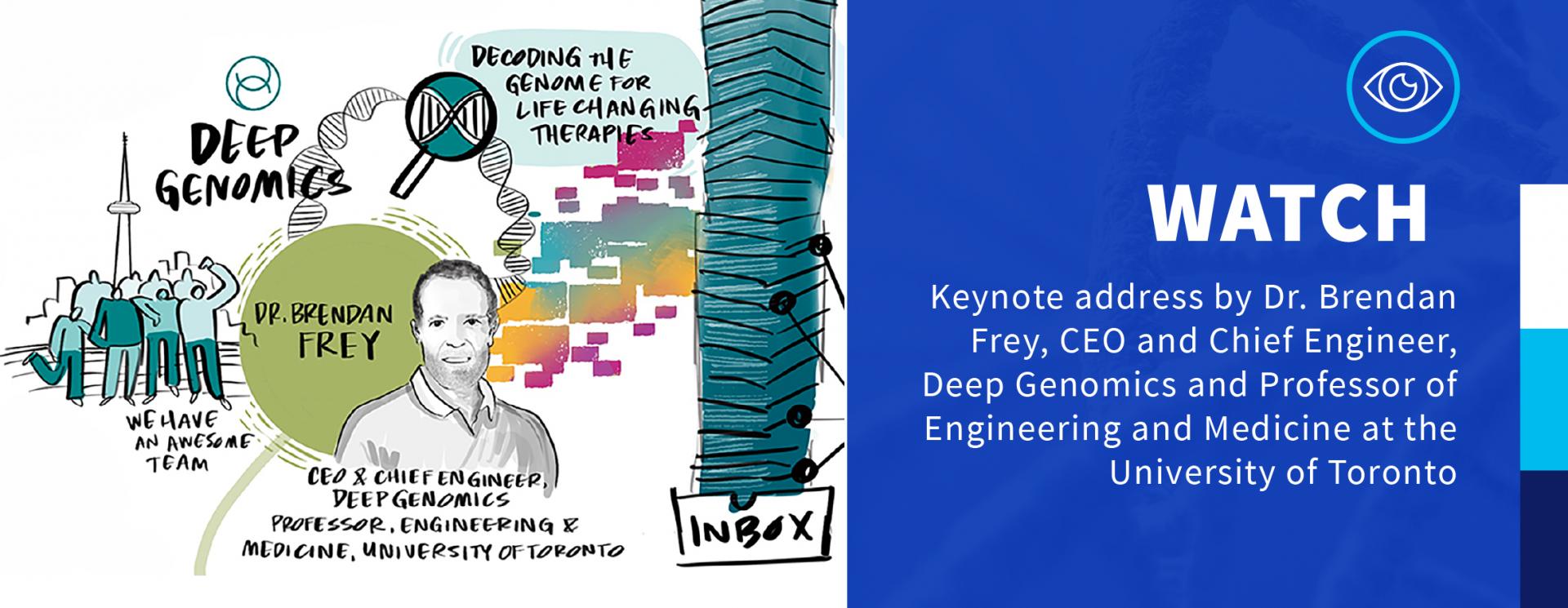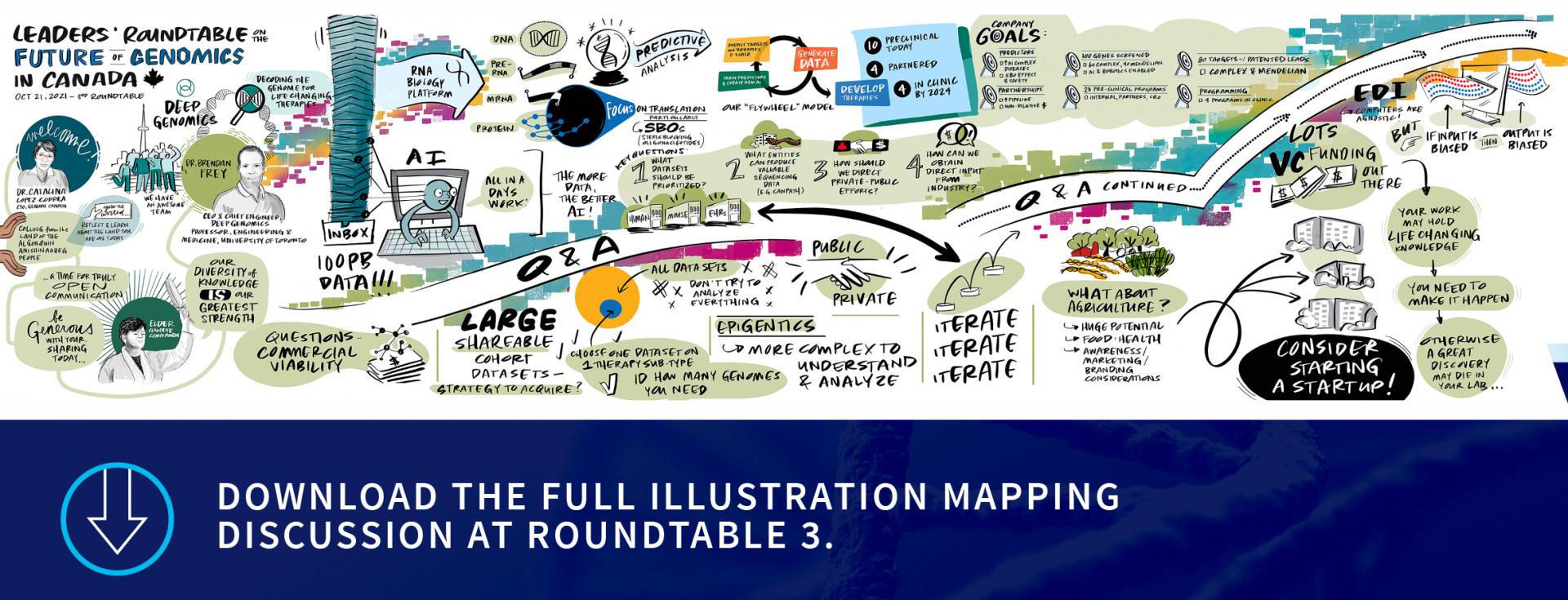Genome Canada hosts third leaders’ roundtable on the future of genomics in Canada
Genome Canada’s virtual roundtable series (Sept. 23, Oct. 5, Oct. 21) convened Canada’s genomics research community, global experts and key partners in the national genomics ecosystem with a shared interest in shaping Genome Canada’s—and the country’s—strategic directions for impact in genomics. This series kicked off a broader dialogue on the future of genomics in Canada.

We are in the early days of a bio revolution where advanced biosciences and biotechnology will fundamentally transform our lives. Driven by the confluence of genomics, big data, artificial intelligence, gene editing and synthetic biology, we have an unparalleled opportunity to deliver homegrown biological solutions to complex problems, drive economic growth and position Canada for global market leadership in key areas of strength and—most fundamentally—protect and improve Canadians’ lives.
Framing the discussion
This roundtable provided an opportunity for Canada’s genomics research community to bring their expertise and insight to framing the questions: “If we want to see how we can further the impact of genomics, what do we need to put in place? How do we need to work together? Who do we need to work with?” In addition, it fostered discussion on where Canada can benefit from work that is cross-sectoral. And where we can see agriculture, environment and human health coming together with their expertise to bring Canada to the next level in research and innovation.
Roundtable three discussion focused on three key questions:
- What are the ecosystem foundational elements Canada should consider as vital supports for delivering future genomics impacts in Canada and internationally? Where are the unique opportunities for supporting cross-sectoral (both public-private and multi-sector) benefits from genomics research and innovation?
- Within broad areas of data, talent and capacity, how do we need to manage our portfolio of supports in order to strengthen Canada’s competitive genomics advantage?
- How can we ensure supports for Canada’s future genomics research and innovation address diverse needs across society, and drive to health, social and economic benefit?
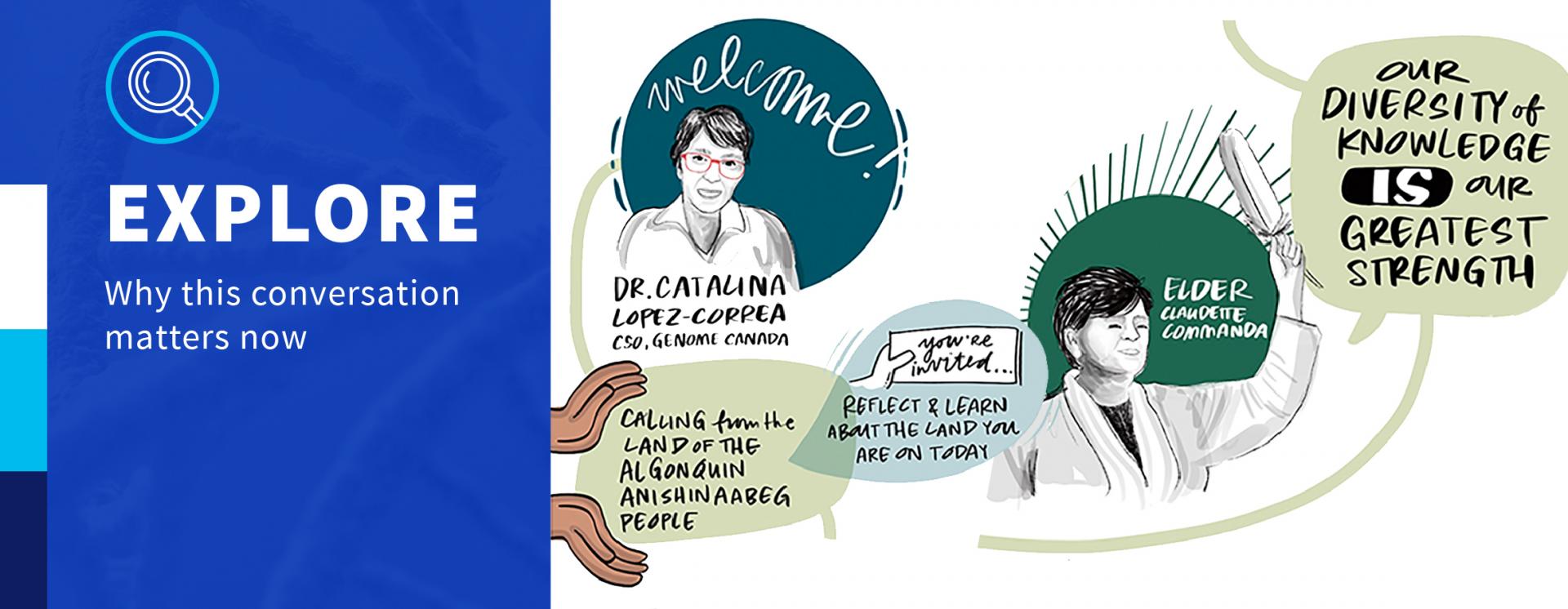
Host, Dr. Catalina Lopez-Correa, CSO of Genome Canada, kicked off the session with a special thanks to Elder Claudette Commanda, Executive Director, First Nations Confederacy of Cultural Education Centres. Elder Commanda was unable to attend the final roundtable, but you can watch her opening remarks from roundtables one and two.
Keynote address
Dr. Brendan Frey, Founder and CEO of Deep Genomics and Professor of Engineering and Medicine at the University of Toronto, delivered a keynote address to kick off the discussion. His presentation was entitled “Deep Genomics: Decode the genome, create life changing therapies.” He contrasted the approach of most biotech companies, that are focused on making one or two drugs, with the genomics community that sees the genome as a resource of knowledge that will propel our understanding of our biology. He outlined these themes on how to get there:
- RNA therapies: Medicines are digital information.
- Artificial intelligence (AI) allows for programming the best RNA therapies for almost any gene in any genetic condition.
- RNA therapies, which are what genomics develops, are a sequence of letters—this means we have digital targets, digital biology and digital therapies.
- AI systems are trained on genomics data sets and that makes it possible to develop drugs faster and a lower cost.
- There is an exciting level of entrepreneurial activity in Canada’s genomics community.
Breakout session leader summaries
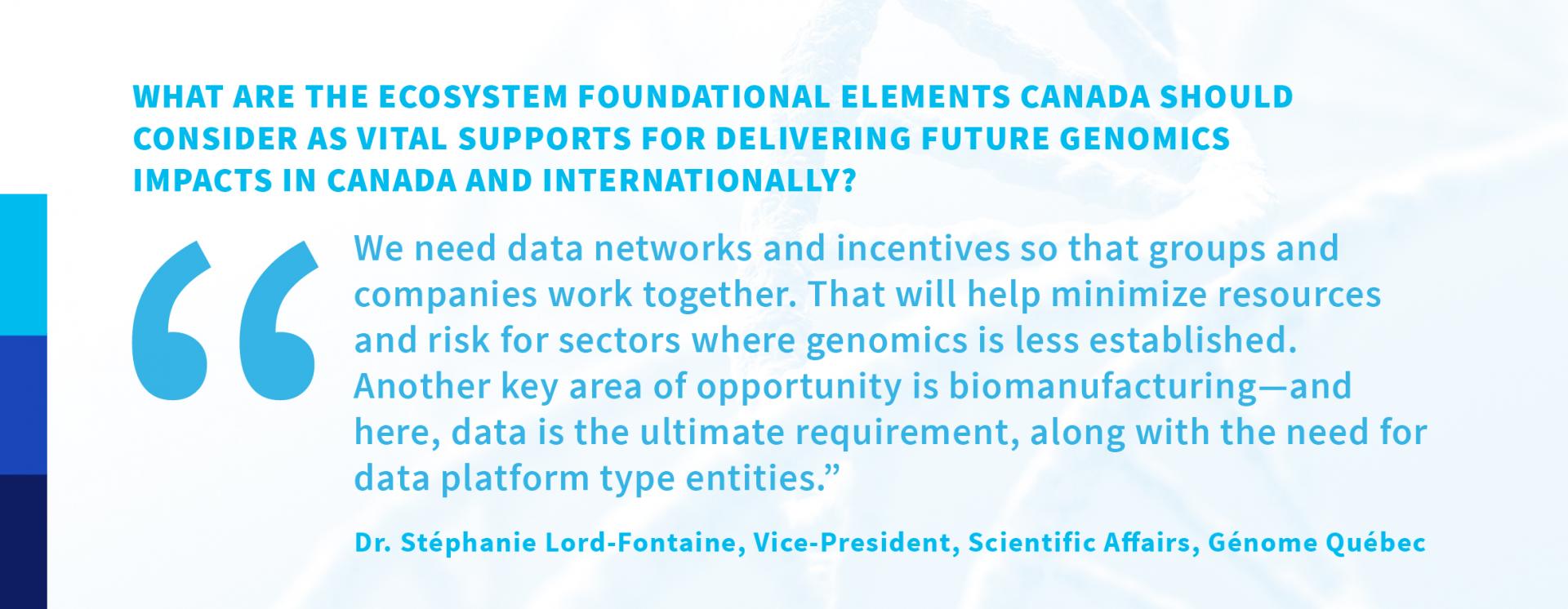

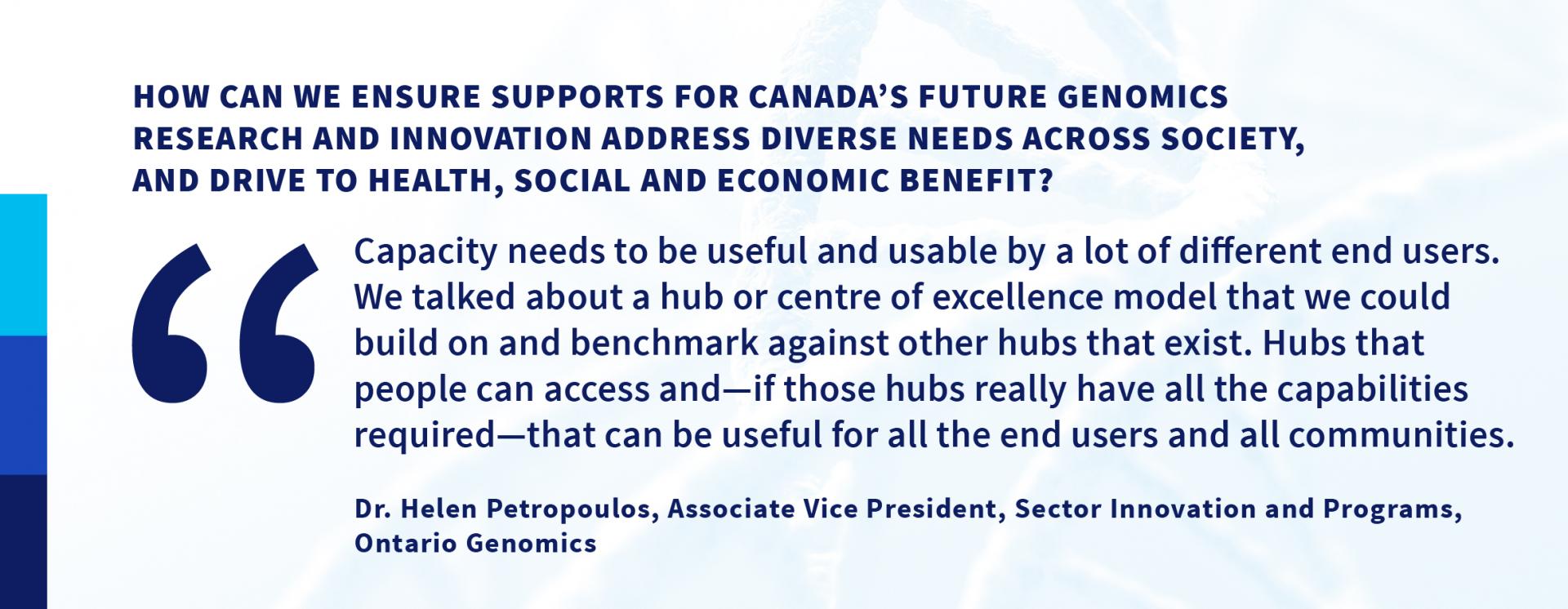
Breakout sessions key insights
- Better data sharing must be a bigger priority. Trust across multiple stakeholders can be a challenge and administrative barriers and interoperability remain an area of concern.
- A reward system for data sharing and setting expectations is essential. We also need to revisit the research success metrics – data isn’t just about publication.
- We need to think about AI analytics at the beginning of the process—and not just at the end.
- Engaging young people in genomics is essential to building Canada’s genomics talent. How can we better engage the K-to-12 age groups?
- Mapping and better explaining career progression through genomics can help interested students envision their future in this ecosystem, enabling Canada to build its research talent.
- To drive diversity, equity and inclusion, there needs to be access to training, tools and resources to enable principal researchers and other people already working in the space to know the right way to build a diverse team, access that talent and retain that talent.
- People talk about physical infrastructure—having the laboratories to do the research. What we really need is to think about it as a pathway from the biological samples collected, to the sequencing and laboratory activities, to the computational capacity to analyze data produced that’s really required.
- Deep sequencing—being able to rapidly sequence samples multiple times to detect small differences in DNA sequences—is critical in accurately reading DNA sequences. But it’s all the “omics” (genomics, phenomics, transciptomics, proteomics, metabolomics, glycomics, etc.) that move us from just reading DNA to also understanding the full collective of biological molecules that lead to organizational function.
- When people think about building Canada’s genomics capacity and infrastructure, we often think about hubs that have all the big sequencers or DNA writers. We have to do more to take genomics out of the lab and build capacity for broader societal uptake—from medical professionals and patients, to farmers, to environmental specialists.


